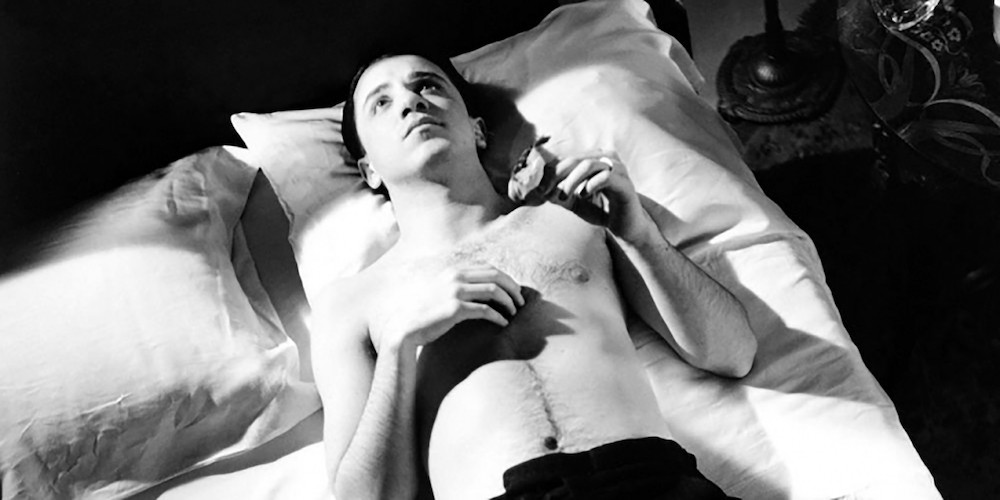Ashland Independent Film Festival Honors Professor Tom Kalin with the Tom Kalin Pride Weekend
The Ashland Independent Film Festival is an annual event that is held in Ashland, Southern Oregon every spring. Traditionally over 7,000 film lovers gather at the art-deco Varsity Theatre, the Historic Ashland Armory, and other venues to watch over 100 films in five days. This year however, because of the COVID-19 crisis, it was held virtually. As part of the festival, an entire program—Tom Kalin Pride Weekend—was devoted to the films by beloved filmmaker and Professor, Tom Kalin, who also heads up the Directing Concentration here at Columbia. Included in the program was a screening of Kalin’s feature film Swoon and several short films. Kalin also received the “Pride Award” at the festival this year, an award given annually to those pioneers in LGBTQ Independent film.
Kalin’s debut feature, Swoon, written and directed by him is considered an integral part of New Queer Cinema genre and was first released in 1992. It is based on the 1924 Leopold and Loeb murder case with Daniel Schlachet starring as Loeb and Craig Chester as Leopold. Leopold and Loeb were two wealthy students at the University of Chicago who in May 1924 kidnapped and murdered 14 year old Bobby Franks in Chicago, Illinois. The film follows the events leading up to the murder, through the trial and then imprisonment. But unlike other films based on this famous case, Kalin places the men and their relationship at the forefront of the story.

Swoon is a black and white film that looks at the killers as people, and Kalin doesn’t try to absolve them of their crimes but instead shows them as human beings indulging in desire and fantasy. The film also brings to light the homophobia of that time, which was seen as a psychological condition. Sigmund Freud famously declined to study these ‘subjects’ for the trial. The men escaped the death penalty as their lawyer argued that they were insane on account of their homosexuality.
The cinematography in Swoon is breathtaking, as is the music which seamlessly weaves in and out of the film. The visuals are reminiscent of a collection of portrait photographs from the 1920’s. A kind of visual storytelling that later became Kalin’s trademark. The film feels like it’s a dream, even though the narrative is largely linear. “I want to murder the idea of suffering as my condition,” says Loeb in the film when conspiring with Leopold. He is the mastermind behind the murder and is able to manipulate Leopold. One can see the complex power dynamics between the two unfold as the story progresses. Later during the trial, people think it was Leopold who was the mastermind because Loeb, they thought, had an innocent face. Kalin is interested in the idea of the body and illusion of freedom we have over our bodies as private properties.
People project their prejudices and biases onto others based on how they look. Loeb and Leopold’s sexuality is seen to be the reason they killed. The public that called them the ‘deranged duo’ labeled their sexuality as ‘perverted.’ The motive for murder was declared ‘a desire to satisfy unnatural lusts.’ Kalin doesn’t try to fix society’s perspective but rather shows them as they were. He leaves interpretations open to the viewer. The camera lingers on objects and images, like a telephone and typewriter, their meaning hidden, but symbolic. The film is littered with such surreal imagery and symbolism.
Also showcased at the festival were some of Kalin’s short films, many that presented material influenced by current events. “It is a particular pleasure to show these films as they don’t get seen that often or more less often,” Kalin said in a statement. Despite this, Kalin enjoys making short films. He sees them as a way of expressing things that may be more difficult to express in a feature and as he puts it, “to keep my filmmaking fingers and toes moving.” These short films give Kalin the opportunity to express his observations about the current culture in a more spontaneous way. Some of the films were provoked by his outrage at the current President and his failure to US citizens. One was a critique on the President’s press secretary trying to litigate the crowd size on his inauguration and the idea of alternate facts that have become the norm under Trump. The other critiqued the President’s contradictory statements and offered a glimpse into the rage that we are seeing boiling over now into action.
Another of these short films was based on Kalin’s decades old musical collaborations. There were two films that felt more like music videos. One was for a song called “Meáchan Rudaí” by The Gloaming. This short film used contemporary pastoral visuals with old black and white footage. The centrepiece of the collection of short films was the one commissioned by American fashion photographer Geoffrey Beane for his 30th anniversary.
Kalin came up with a silent black and white film which showcases Beane’s designs. The film feels like a performance art piece and a fashion show presented through stunning visuals and dream-like structure where three narratives unfold without dialogue and with an accompaniment of music. It evokes Salvadore Dali. In one of the scenes, a character is looking through keyholes at images of madness, love, and magic. Kalin has a gift of working with the black and white medium and is able to transport you to a different world with his use of lighting and cinematography. He uses Beane’s designs as a way to create this stunning and disturbing world. One can see the 1920’s German Expressionist influence in the film’s landscape and spartan setting.
Kalin’s films are a celebration of who he is and his observations of the time. Some are revelatory and some even prophetic. He puts his rage, frustrations, and love into his films. And even though Swoon is almost 30 years old, it doesn’t seem so, either in content or style.
